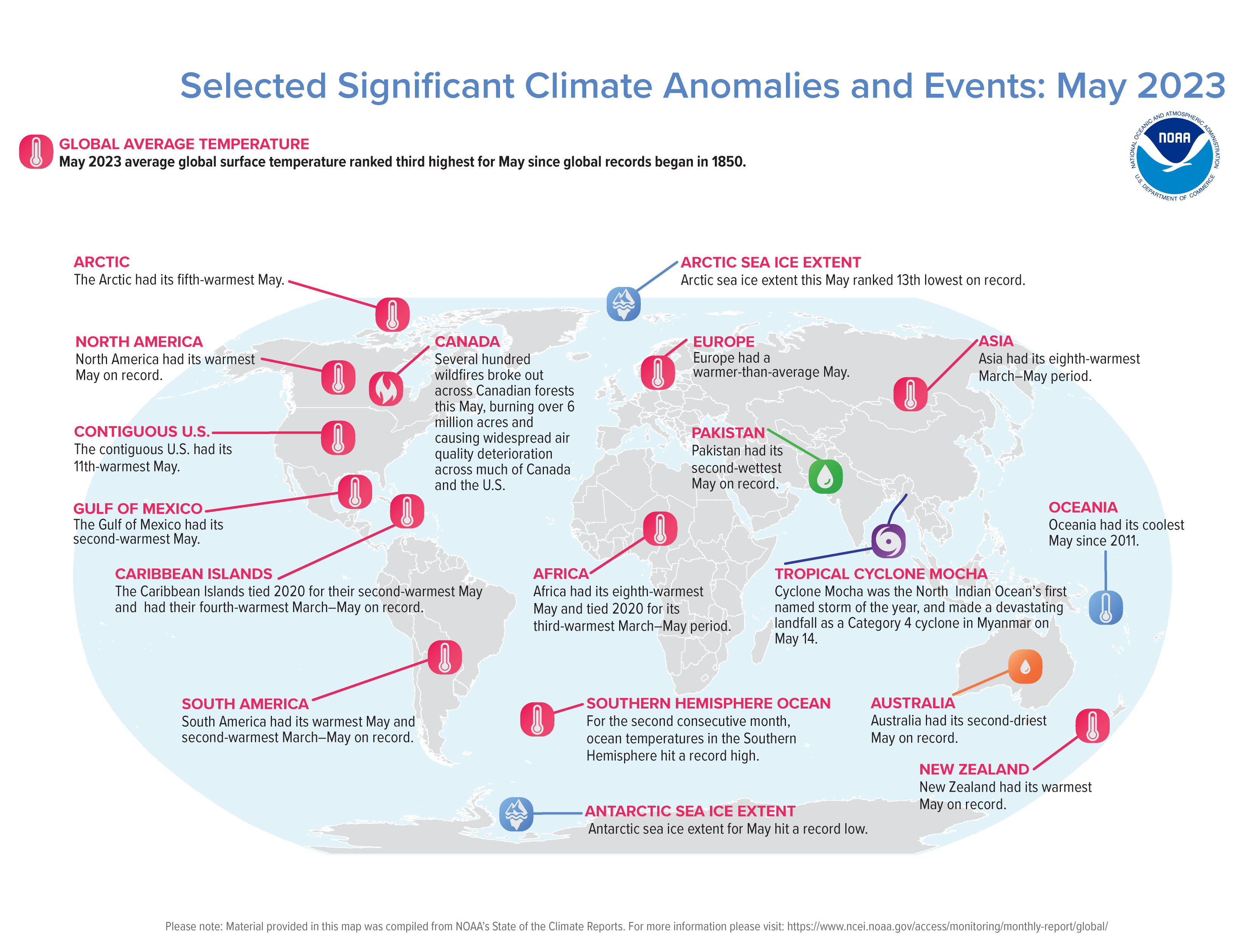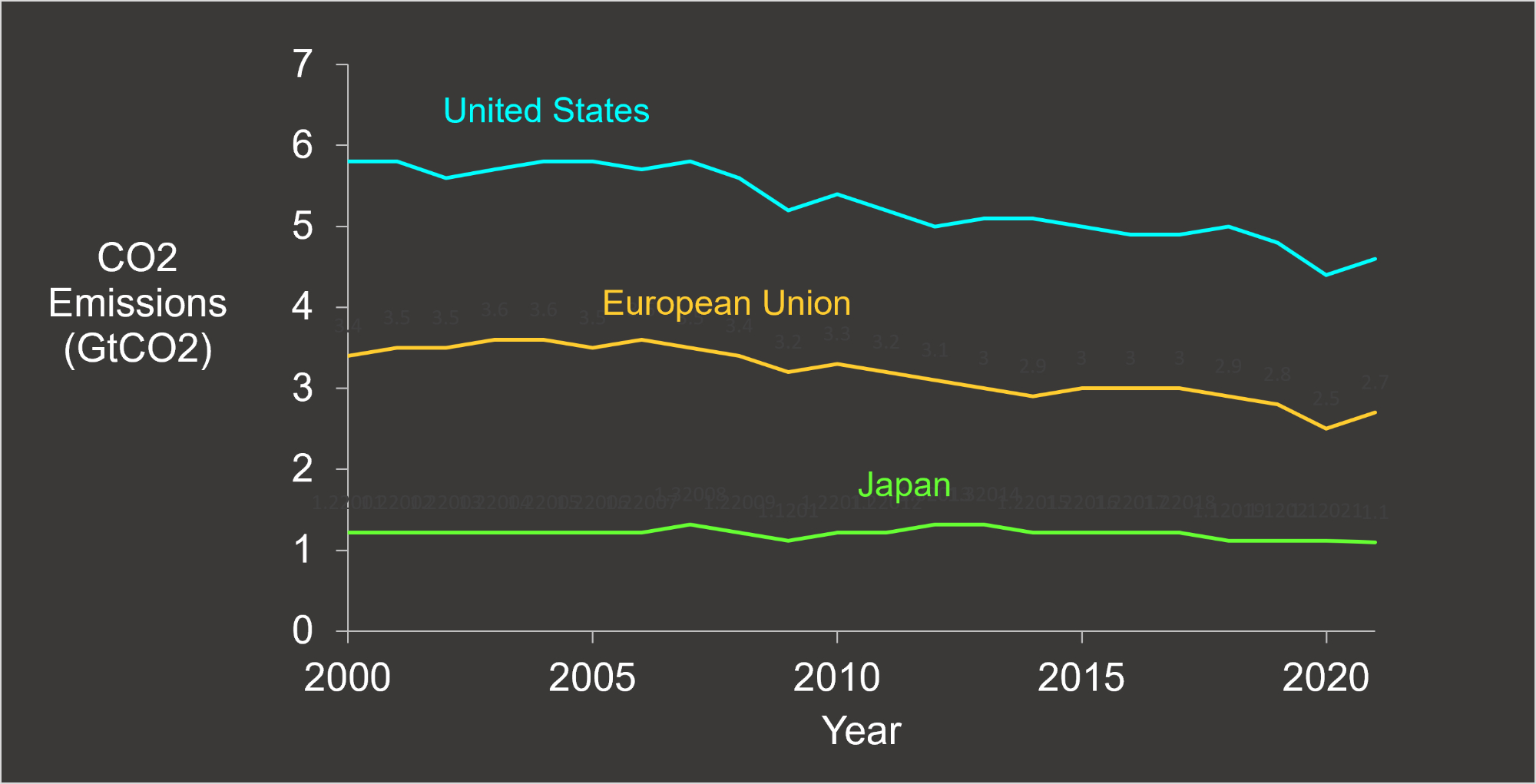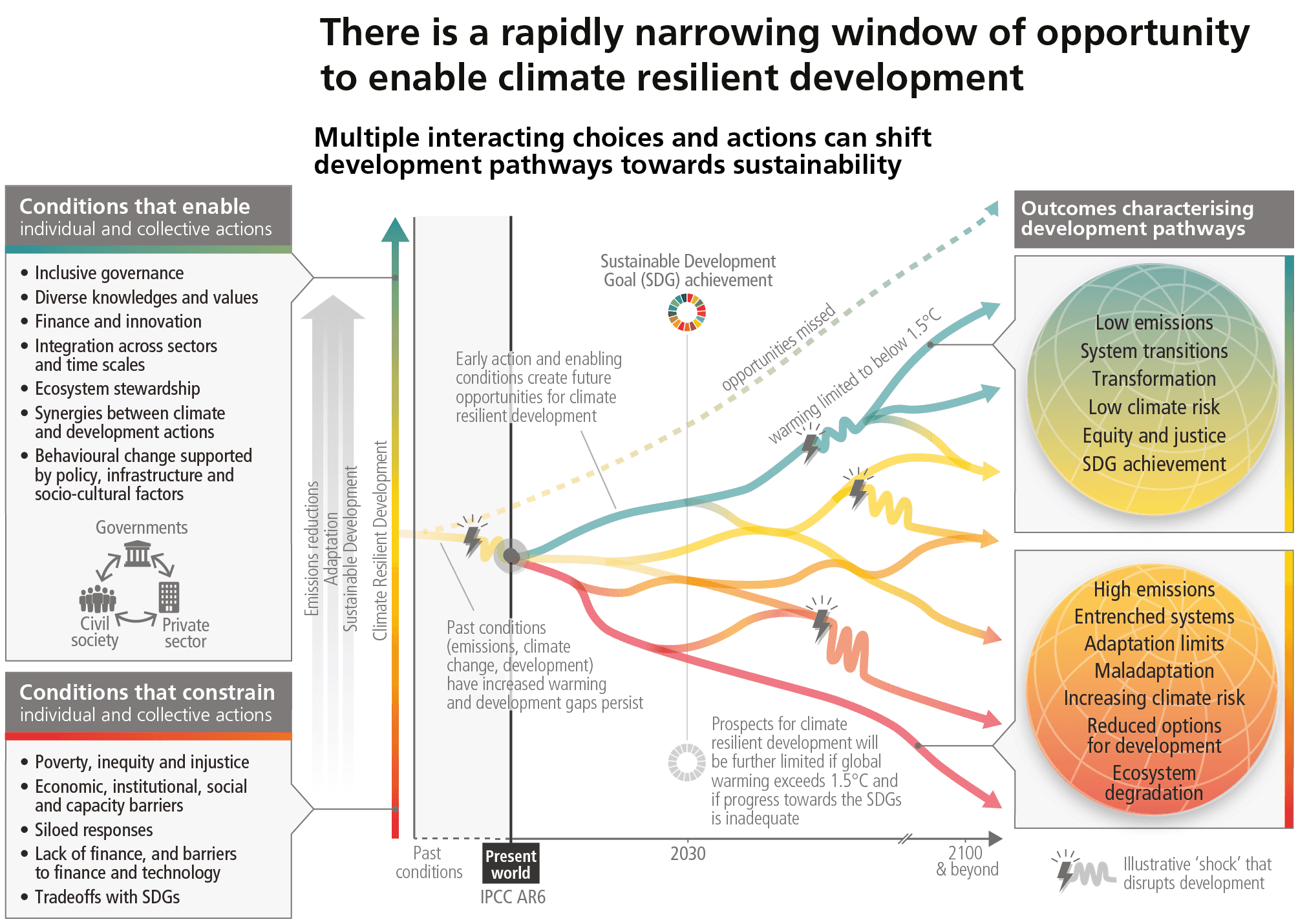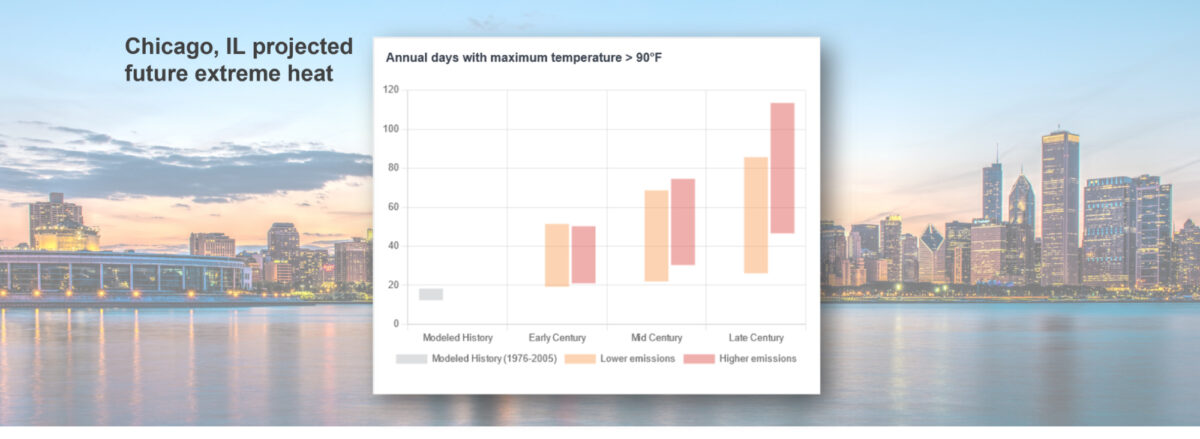Chapter Contents
- Apocalyptic Tales of Climate Change
- Use of Language and Perspective in Teaching Climate Change
- Hope and Optimism
- Considerations of Fear, Anxiety, and Mental Health
- Apocalyptic Prophesies Versus Predictions of Climate Change
- Reality Check: A Personal Perspective
- Science Teaching Toward a Sustainable World
- Resources
Image above: Projections of the number of days per year in Chicago, IL in which the temperature reaches above 90°F. In the lower emissions scenario (RCP4.5), global carbon emissions reach a maximum in the year 2040 and then start to decline; in the higher emissions scenario (RCP8.5), global carbon emissions increase throughout the 21st century. Figure by Ingrid Zabel for PRI's Earth@Home project (CC BY-NC-SA 4.0 license), with chart from the National Oceanic and Atmospheric Administration's Climate Mapping for Resilience and Adaptation tool.
Are the apocalyptic prophesies of climate change coming true? Yes. In many respects the Earth is changing—in temperature, ice and glacier melt, storm frequency, and many other respects—in ways projected by climate scientists.

But there are hopeful signs. US carbon emissions have declined; alternative energies, particularly wind and solar energy, are increasing exponentially in the US and globally; and plans for new power plants, building designs, heating and cooling systems, and transportation systems promise greatly improved efficiencies within coming decades. Many towns and cities, colleges and universities, and businesses have set ambitious low to zero carbon emissions goals within the coming decades. And there is such global awareness of climate change as a significant issue, that major treaties have been signed by a substantial fraction of world’s nations.


Part of learning about climate change will be taking into account the strong possibility that the near future will hold some ongoing uncertainties and surprises. This is, after all, part of the nature of complex systems science. Almost certainly different parts of the climate system will change at different rates, either more slowly or more quickly than we expected, and these changes will be geographically varied. If some climate projections are, in the near-term, not as severe or as rapid as what we expected, that could be very good news—but such news might also add to complacency or skepticism even while climate change impacts continue. Apocalyptic projections of climate change are not inevitable, but as new information becomes available we need to be aware that the impacts of climate change are not binary, solved or world-ending: we will need to (and can) mitigate climate change, in many steps, over many years.



